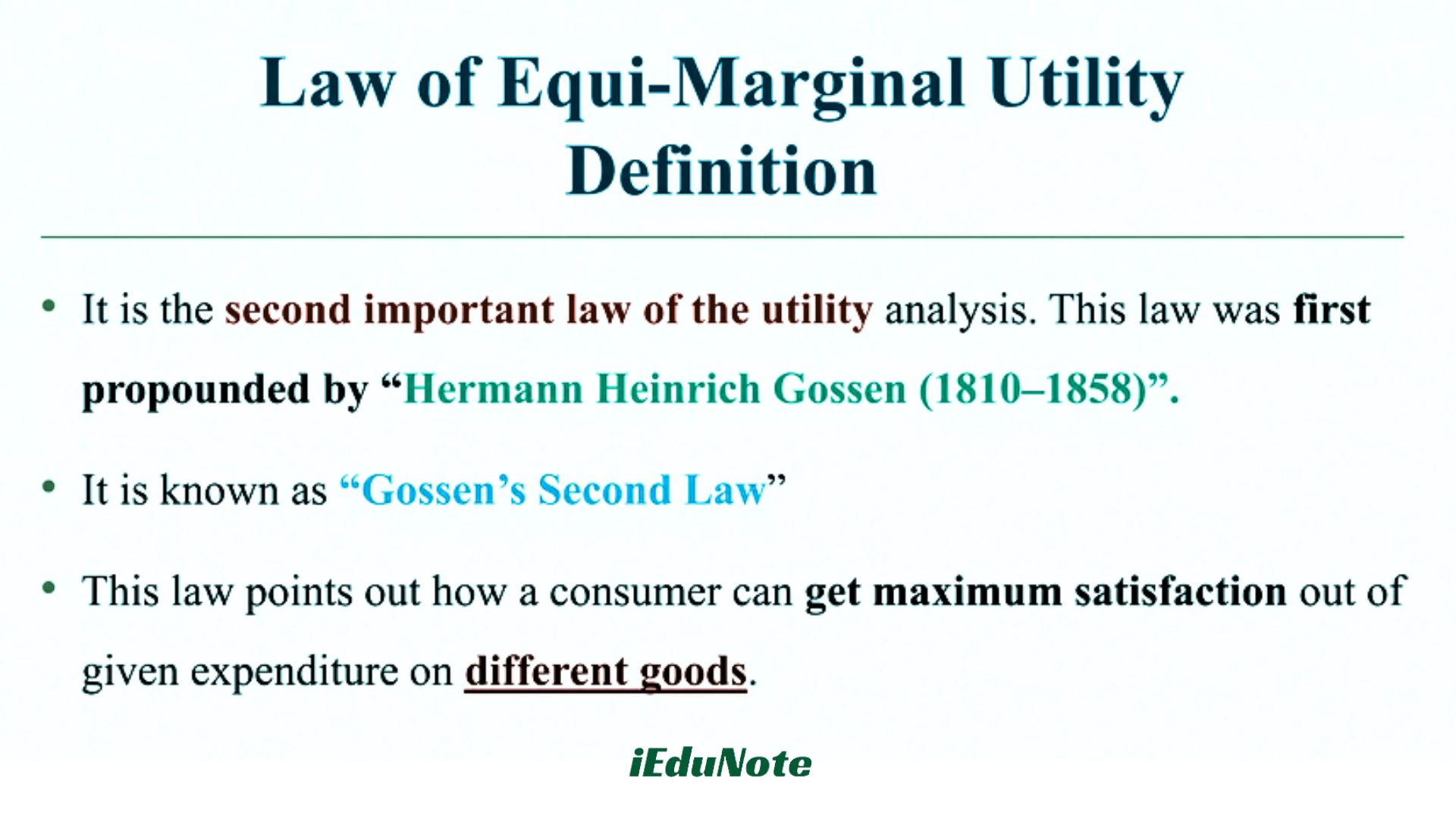Price elasticity of demand measures the degree of responsiveness of the quantity demanded of a good to a change in its price. It is also defined as: “The ratio of proportionate change in quantity demanded caused by a given proportionate change in price.”
Formula for Calculation

Price elasticity of demand is computed by dividing the percentage change in quantity demanded of a good by the percentage change in its price.
Symbolically price elasticity of demand is expressed as under: Ed = Percentage Change in Quantity Demanded Percentage Change in Price Simple formula for calculating the price elasticity of demand:
Ed = %ΔQ %ΔP
Here:
- Ed stands for price elasticity of demand.
- Q stands for original quantity.
- P stands for the original price.
- Δ stands for a small change.
Example:
The price elasticity of demand tells us the relative amount by which the quantity demanded will change in response to a change in the price of a particular good.
For example, if there is a 10% rise in the price of tea and it leads to a reduction in its demand by 20%, the price elasticity of demand will be:
Ed = -20/+10
Ed = -2.0
Types of Elasticity of Demand

The Three main types of elasticity of demand are discussed in brief.
Price Elasticity of Demand
Definition and Explanation:
The concept of price elasticity of demand is commonly used in economic literature. Price elasticity of demand is the degree of responsiveness of quantity demanded of a good to a change in its price. Precisely, it is defined as:
“The ratio of proportionate change in the quantity demanded of a good caused by a given proportionate change in price.”
Formula:
The formula for measuring the price elasticity of demand is:
Price Elasticity of Demand =
Percentage Change in Quantity Demanded
Percentage Change in Price
Ed = ΔQd/ Qd ΔP/P
Example
Let us suppose that the price of a good falls from $10 per unit to $9 per unit in a day. The decline in price causes the quantity of the goods demanded to increase from 125 units to 150 units per day.
The price elasticity using the simplified formula will be:
ΔQ = 150 – 125 = 25
ΔP = 9 – 10 = -1
Original Quantity = 125
Original Price = 10
Ed = 25 / (-1) x 10 / 125 = -2.0 = 2.0
The elasticity coefficient is greater than one. Therefore, the demand for the good is elastic.
Methods of Measuring Price Elasticity of Demand
There are basically four ways by which we can measure price elasticity of demand. These methods are:
- Percentage method
- Total outlay method
- Point method
- Arc method
Percentage Method

The percentage method is one of the commonly used approaches of measuring price elasticity of demand under which price elasticity is measured in terms of the rate of percentage change in quantity demanded to the percentage change in price.
PED = % change in quantity demanded / % change in price
where,
% change in quantity demanded = ( new quantity (Q2) – initial quantity (Q1) / initial quantity (Q1) ) * 100
therefore, PED = ^Q / ^P * P1 / Q1
For an example: When the price of a commodity was $10 per unit, its demand in the market was 50 units per day. When the price of the commodity fell to $8, the demand rose to 60 units.
The price elasticity of demand is always a negative number because the quantity demanded and the price of the commodity share an inverse relationship. This means, the higher the price, the lower will be the demand, and the lower the price, the higher the demand for the commodity.
Total outlay method

Also known as the total expenditure method of measuring price elasticity of demand, it was developed by Professor Alfred Marshall. According to this method, price elasticity of demand can be measured by comparing total expenditure on a commodity before and after the price change.
While comparing the expenditure, we may get one of three outcomes. They are
The elasticity of demand will be greater than unity (Ep > 1)
When total expenditure increases with a fall in price and decreases with a rise in price, the value of PED will be greater than 1. Here, the rise in price and total outlay or expenditure move in opposite directions.
The elasticity of demand will be equal to unity (Ep = 1)
When total expenditure on a commodity remains unchanged in response to a change in the price of the commodity, the value of PED will be equal to 1. z
The elasticity of demand will be less than unity (Ep < 1)
When total expenditure decreases with fall in price and increases with rise in price, the value of PED will be less than 1. Here, the price of commodity and total outlay move in the same direction.
Point Method

Prof. Marshall devised a geometrical method for measuring elasticity at a point on the demand curve. Let RS be a straight-line demand curve in the Figure below.
Suppose the price falls from PB(=OA) to MD(=OC). the quantity demanded increases from OB to OD. Elasticity at point P on the RS demand curve according to the formula is Ep = Aq/Ap x p/q.
Where A q represents changes in quantity demanded, Ap changes in price level while p and q are initial price and quantity levels.
From Figure, A q = BD = QM
Ap = PQ
p = PB and q = OB

Substituting these values in the elasticity formula:
Ep = QM / PQ * PB / OB
moreover, QM / PQ = BS / PB [<PQM = <PBS being right angles and PQM and PBS are similar ^S ]
since, BS / OB = OA / AR = PS / PR = Lower Segment / Upper Segment
With the help of the point method, it is easy to point out the elasticity at any point along a demand curve.

On a linear demand curve price elasticity varies from infinity to zero
Arc Method
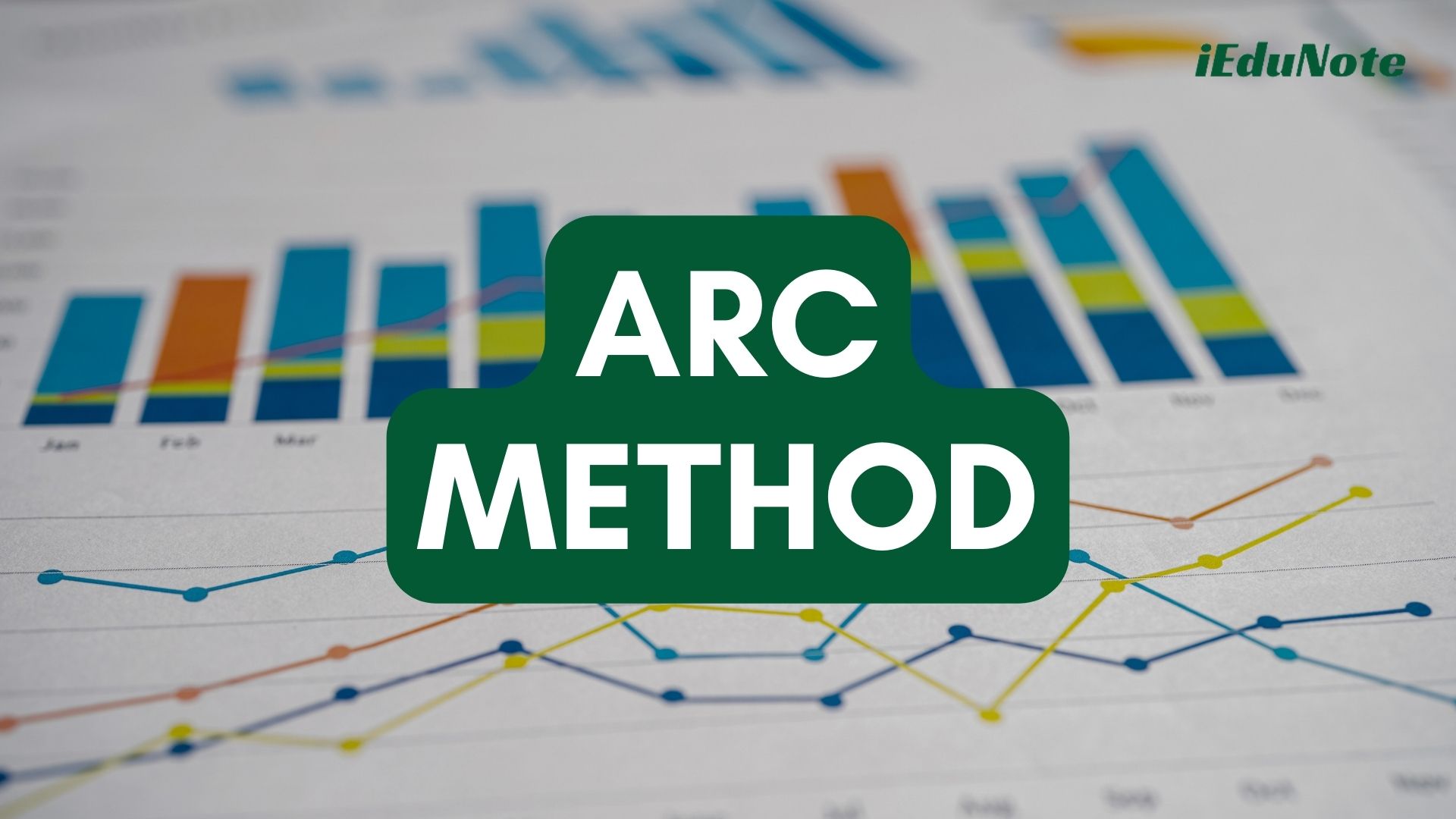
Any two points on a demand curve make an arc, and the coefficient of price elasticity of demand of an arc is known as arc elasticity of demand.
This method is used to find out the price elasticity of demand over a certain range of price and quantity.
Thus, this method is applied while calculating PED when the price or quantity demanded of the commodity is highly changed.

In the figure, we can see that AB is an arc on the demand curve DD, and point C is the mid-point on AB.
If we followed the point method to measure PED at points A and B in the curve DD, we get different coefficients as a result of using different bases.
To avoid this discrepancy, elasticity is measured by taking mean values of price and quantity demanded in the arc method.
The average price and quantity demanded are calculated as
Average price = (P1 + P2)/2
& Average quantity demanded = (Q1 + Q2)/2
Once the average value of price and quantity demanded are determined, PED at point C can be calculated by applying the following formula
PED = (change in quantity demanded / average quantity demanded) / ( change in price / average price)
PED = (Q2 – Q1) / (P2 – P1) * (P1 + P2) / (Q1 + Q2)
Where,
AQ = change in quantity demanded = Q2 – Q1
Q1 = initial quantity demanded
Q2 = new quantity demanded
^P = change in price = P2 – Pl
P1 = new price
P2 = initial price
Factors Determining Price Elasticity of Demand
The price elasticity of demand is not the same for all commodities. It may be equal or low depending upon a number of factors. These factors that influence the price elasticity of demand, in brief, are as under:
Nature of Commodities
In developing countries of the world, the per capita income of the people is generally low. They spend a greater amount of their income on the purchase of necessities of life such as wheat, milk, cloth, etc.
They have to purchase these commodities whatever their price. The demand for goods or necessities is, therefore, less elastic or inelastic. The demand for luxury goods is greatly elastic.
For example, if the price of burger falls, its demand in the cities will go up.
Availability of Substitutes
If a good has a greater number of close substitutes available in the market, the demand for the good will be greatly elastic.
For example, if the price of Coca-Cola rises in the market, people will switch over to the consumption of Pepsi-Cola, which is its close substitute. So the demand for Coca-Cola is elastic.
Proportion of the Income Spent on the Good
If the proportion of income spent on the purchase of a good is very small, the demand for such a good will be inelastic.
For example, if the price of a box of matches or salt rises by 50%, it will not affect the consumer’s demand for these goods. The demand for salt, maker box, therefore, will be inelastic.
On the other hand, if the price of a car rises from $6 lakh to $9 lakh and it takes a greater portion of the income of the consumers, its demand would fall. The demand for cars is, therefore, elastic.
Time
The period of time plays an important role in shaping the demand curve. In the short run, when the consumption of a good cannot be postponed, its demand will be less elastic.
In the long run, if the rise in price persists, people will find out methods to reduce the consumption of goods. So the demands for a good in the long run are elastic, other things remaining constant.
For example, if the price of electricity goes up, it is very difficult to cut back its consumption in the short run. However, if the rise in price persists, people will plan to substitute gas, heaters, fluorescent bulbs, etc.
So that they will use less electricity. So the electricity demand will be greater (Ed = > 1) in the long run than in the short run.
Number of Users of a Good
If a good can be put to a number of uses, its demand is greater elastic (Ed > 1).
For example, if the price of coal falls, its quantity demanded will rise considerably because demand will be coming from households, industries railways, etc.
Addiction
If a product is addictive such as cigarettes, or wine the rise in its price would not induce much change in demand. The demand for habitual goods is less elastic.
Joint Demand
If two goods are jointly demanded, then the elasticity of demand depends upon the elasticity of demand of the other jointly demanded goods.
For example, with the rise in the price of cars, their demand is slightly affected and then the demand for petrol will also be less
Types of price elasticity
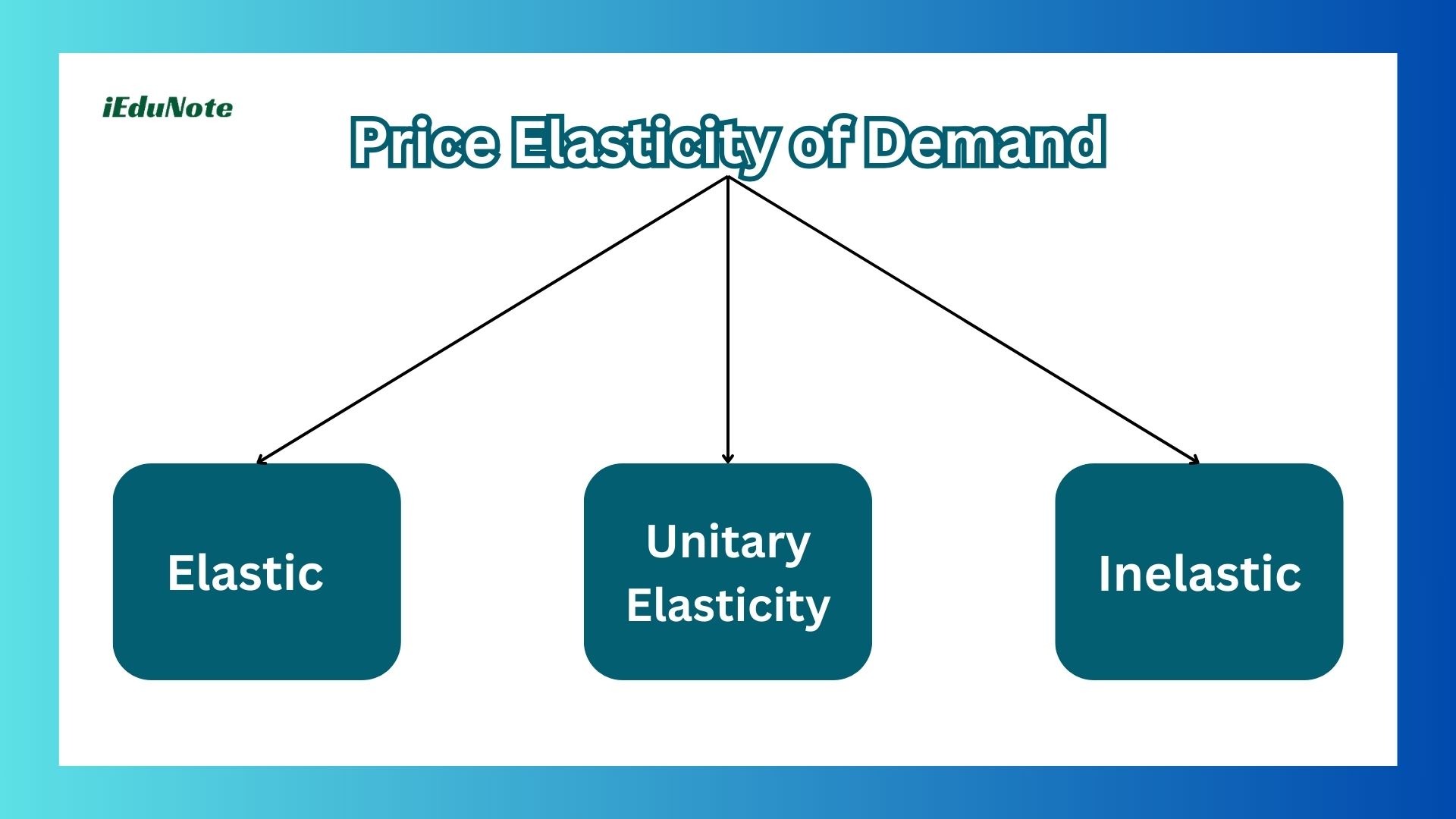
The concept of price elasticity of demand can be used to divide the goods into three groups.
Elastic
When the percent change in the quantity of a good is greater than the percent change in its price, the demand is said to be elastic.
When the elasticity of demand is greater than one, then it is termed as elastic.
Mathematically: %ΔQd > %ΔP and Ed > 1
Unitary Elasticity
When the percentage change in the quantity demanded is equal to the percentage change in its price, the price elasticity of demand is said to be unitary elastic.
When the elasticity of demand is equal to one, then it is termed unitary elastic.
Mathematically: %ΔQd = %ΔP and Ed = 1
Inelastic
When the percent change in quantity demanded of a good is less than the percentage change in its price, the demand is called inelastic. When the elasticity of demand is less than one, then it is termed inelastic.
Mathematically: %ΔQd < %ΔP and Ed < 1
Income Elasticity of Demand
Definition and Explanation:
Income is an important variable affecting the demand for a good. When there is a change in the level of income of a consumer, there is a change in the quantity demanded of a good, other factors remaining the same.
The degree of change or responsiveness of the quantity demanded of a good to a change in the income of a consumer is called income elasticity of demand. The income elasticity of demand can be defined as:
“The ratio of the percentage change in the quantity of a good purchased, per unit of time, to a percentage change in the income of a consumer.”
Formula:
The formula for measuring the income elasticity of demand is the percentage change in demand for a good divided by the percentage change in income. Putting this in symbols gives:
Ey = Percentage Change in Demand Percentage Change in Income
Simplified formula:
Ey = ^Q/^Y * Y/Q
Example:
A simple example will show how income elasticity of demand can be calculated. Let us assume that the income of a person is $4000 per month and he purchases six CDs per month.
Let us assume that the monthly income of the consumer increases to $6000 and the quantity demanded of CDs per month rises to eight. The elasticity of demand for CDs will be calculated as follows:
ΔQ = 8 – 6 = 2
ΔY = $6000 – $4000 = $2000
Original quantity demanded = 6
Original income = $4000
Ey = ΔQ / ΔY x Y / Q = 2 / 2000 x 4000 / 6 = 0.66
The income elasticity is 0.66, which is less than one.
Types of income elasticity
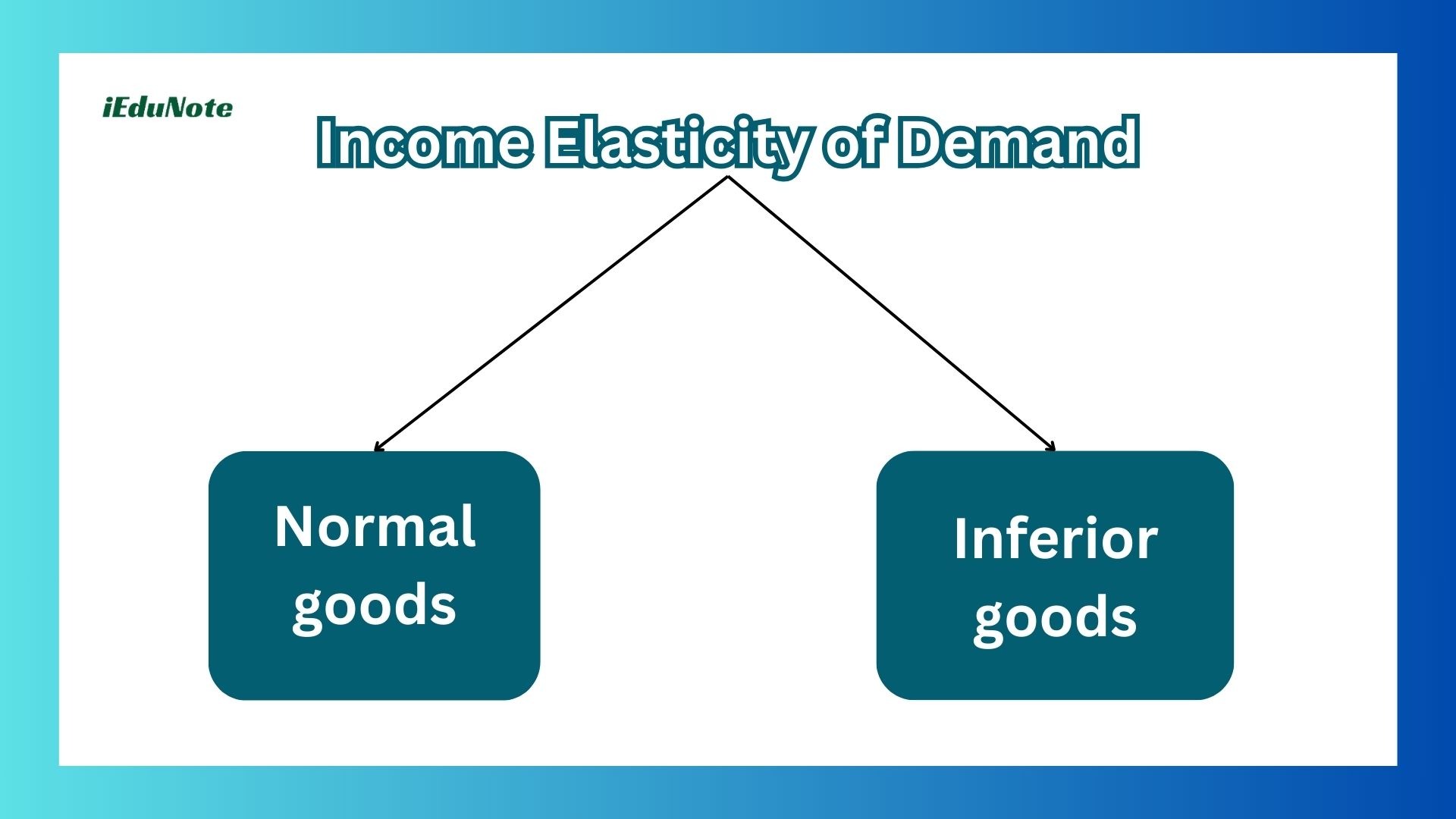
When the income of a person increases, his demand for goods also changes depending upon the factors, whether the good is a normal good or an inferior good.
Normal goods
When the value of elasticity is greater than zero but less than one.
Inferior goods
Goods with an income elasticity of less than 1 are called inferior goods.
For example, people buy more food as their income rises, but the percentage of the increase in its demand is less than the percent of the increase in income.
Cross Elasticity of Demand
Definition and Explanation:
The concept of cross elasticity of demand is used for measuring the responsiveness of the quantity demanded of a good to changes in the price of related goods.
Cross elasticity of demand is defined as: “The percentage change in the demand of one good as a result of the percentage change in the price of another good.”
Formula:
The formula for measuring the cross elasticity of demand is:
Exy = % Change in Quantity Demanded of Good X % Change in Price of Good Y
The numerical value of cross elasticity depends on whether the two goods in question are substitutes, complements, or unrelated.
Types of Cross Elasticity
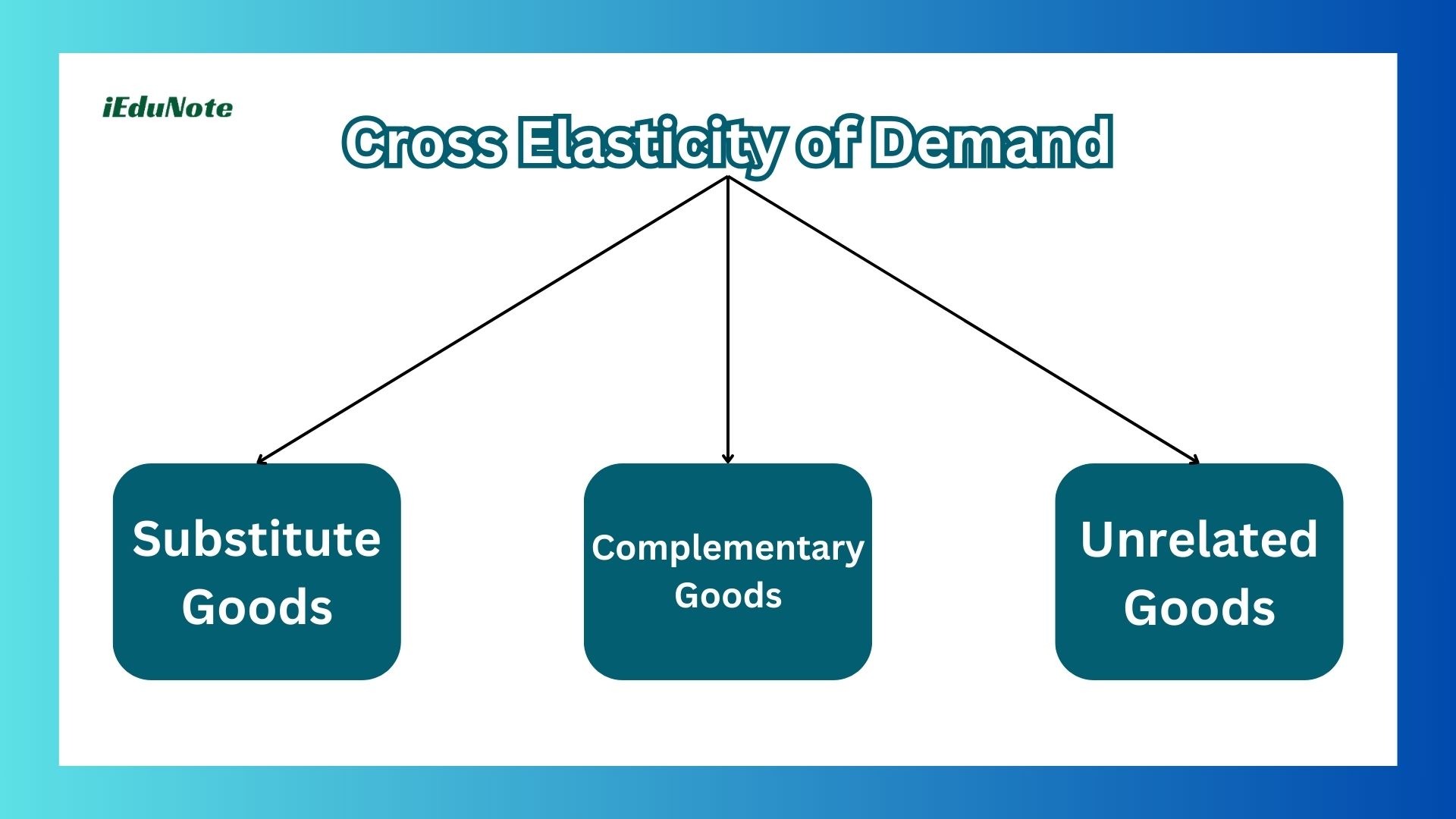
Substitute Goods
When two goods are substitutes for each other, such as Coca-Cola and Pepsi, an increase in the price of one good will lead to an increase in demand for the other good. The numerical value of the goods is positive.
For example, there are two goods, Coca-Cola and Pepsi, which are close substitutes.
If there is an increase in the price of Pepsi, called good Y, by 10% and it increases the demand for Coca-Cola, called good X, by 5%, the cross elasticity of demand would be:
Exy = %ΔQX / %ΔPY = 5/10 = 0.2
Since Exy is positive (E > 0), Therefore, Coca-Cola and Pepsi are close substitutes.
Complementary Goods
However, in the case of complementary goods, such as cars and petrol, cricket bats and balls, a rise in the price of one good, say cricket bats, by 7% will bring a fall in the demand for balls, say by 6%.
The cross elasticity of demand for goods which are complementary to each other is, Therefore, 6% / -7% = -0.85 (negative).
Unrelated Goods
The two goods which are unrelated to each other, say apples and pens, if the price of apples rises in the market, it is unlikely to result in a change in the quantity demanded of pens. The elasticity is zero for unrelated goods.
Importance of Elasticity of Demand
The importance of elasticity of demand is discussed below:
Importance in taxation policy
As regards its practical advantages, the concept has immense importance in the sphere of government finance. When a finance minister levies a tax on a certain commodity, he has to see whether the demand for that commodity is elastic or inelastic.
If the demand is inelastic, he can increase the tax and thus collect larger revenue. But if the demand of a commodity is elastic, he is not in a position to increase the rate of a tax. If he does so, the demand for that commodity will be calculated and the total revenue reduced.
Price discrimination by monopolists
If the monopolist finds that the demand for his commodities is inelastic, he will at once fix the price at a higher level in order to maximize his net profit. In case of elastic demand, he will lower the price in order to increase his sales and derive the maximum net profit. Thus we find that the monopolists also get practical advantages from the concept of elasticity.
Price discrimination in cases of joint supply
The concept of elasticity is of great practical advantage where the separate costs of joint products cannot be measured.
Importance to businessmen
The concept of elasticity is of great importance to businessmen. When the demand for a good is elastic, it increases sales by lowering its price. In case the demand is inelastic, they
charge a higher price for a commodity.
Help to trade unions
Trade unions can raise the wages of labor in an industry where the demand for the product is relatively inelastic. On the other hand, if the demand, for products is relatively elastic, the trade unions cannot press for higher wages.
Use in international trade
The terms of trade between two countries are based on the elasticity of demand of the traded goods.
Determination of the rate of foreign exchange
The rate of foreign exchange is also considered on the elasticity of imports and exports of a country.
Guideline to the producers of advertisement
The concept of elasticity provides a guideline to the producers for the amount to be spent on advertisement. If the demand for a commodity is elastic, the
producers shall have to spend large sums of money on advertisements to increase sales.
Use in-factor pricing
The factors of production which have inelastic demand can obtain a higher price in the market and vice versa.

